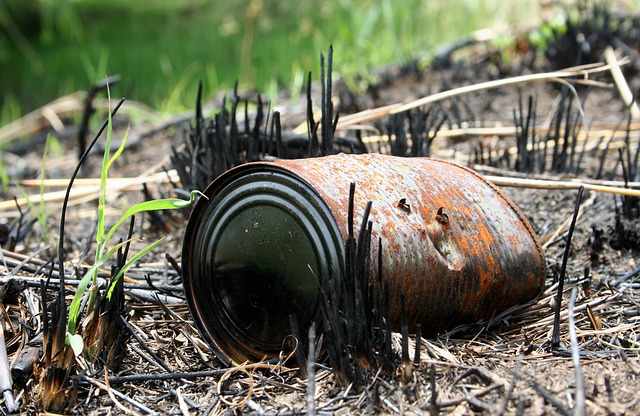Pacific Gas and Electricity (PG&E), the wildfire liability California focused electrical utility company, has now agreed the last of its major settlements with wildfire claimants, with a $13.5 billion agreement with individuals removing another hurdle that has stalled subrogation payments from making their way to beneficiaries.
 PG&E has agreed a $13.5 billion settlement to resolve all claims with individuals arising from 2017 and 2018 wildfires, including the 2017 Tubbs Fire, as well as claims arising from the 2016 Ghost Ship Fire in Oakland and the 2015 Butte fire.
PG&E has agreed a $13.5 billion settlement to resolve all claims with individuals arising from 2017 and 2018 wildfires, including the 2017 Tubbs Fire, as well as claims arising from the 2016 Ghost Ship Fire in Oakland and the 2015 Butte fire.
This settlement, which remains subject to PG&E’s bankruptcy plan under Chapter 11, had been seen as stalling an $11 billion agreement with utility entered into with holders of insurance subrogation rights.
PG&E agreed a subrogation settlement totalling $11 billion back in October, which as we explained at the time may eventually provide some benefit to reinsurance providers including some insurance-linked securities (ILS) funds that were exposed to losses from certain 2017 and 2018 California wildfire events.
PG&E’s equipment and infrastructure has been deemed liable for a number of the major wildfire outbreaks in California over the last two years, most notably for the devastating Camp wildfire.
Those wildfires over recent years have left insurance and reinsurance companies, ILS funds and retrocessionaires on the hook for over $20 billion of losses.
This latest agreement, with individual claimants, is seen as necessary for PG&E to be able to continue down its planned route to emerge from bankruptcy under Chapter 11, as a result it has held back any progress on distributing any capital to subrogation rights holders.
“From the beginning of the Chapter 11 process, getting wildfire victims fairly compensated, especially the individuals, has been our primary goal. We want to help our customers, our neighbors and our friends in those impacted areas recover and rebuild after these tragic wildfires,” explained CEO and President of PG&E Corporation Bill Johnson.
“We appreciate all the hard work by many stakeholders that went into reaching this agreement. With this important milestone now accomplished, we are focused on emerging from Chapter 11 as the utility of the future that our customers and communities expect and deserve.”
With all major wildfire claims now on a path to be resolved and the total amount of PG&E’s wildfire liabilities determined, the company will amend and finalise its bankruptcy plan and move to satisfy all outstanding wildfire claims.
There still isn’t a timetable as for when PG&E may begin to pay subrogation rights holders, but it’s certainly moving closer and looks a great deal more certain now.
As a result, some benefits could flow back to the insurance and reinsurance sector, in terms of recouping some losses already paid, as subrogation is considered a favourable outcome for re/insurers and so potentially for some reinsurance and ILS transactions related to them.
It could end up benefiting some ILS funds and their investors, particularly those entering into quota share and other risk sharing insurance-linked securities (ILS) arrangements with reinsurers. There could even be some benefits for sidecar vehicles that were exposed, in terms of their ultimate losses from the wildfires coming down slightly.
Whether retrocessionaires could see any benefit from the subrogation remains a moot point, although some hedge funds have tried to buy distressed ILS positions that have collateral trapped by the wildfires, we understand.
ILS fund managers seemingly remain extremely cautious about the potential for the PG&E wildfire insurance subrogation settlement to benefit them.
There is the potential for meaningful benefits to certain contracts, but in a syndicated marketplace like reinsurance and retro how much of this successfully flows back to the source of capital remains to be seen.
Valuations are likely to remain as they are until any capital flows back in, or new loss notifications come from cedents and unlocks any of the collateral that remains trapped around these events.
There is also the issue of those who took options to commute losses early and now won’t benefit from any return of value through subrogation, or those re/insurers who sold their subrogation rights just to finalise their losses, to consider.
Time is important in this market and sometimes realising a loss, to be able to move forwards, is more important than hanging on in the hope of recouping some it after protracted legal proceedings.
 View all of our Artemis Live video interviews and subscribe to our podcast.
View all of our Artemis Live video interviews and subscribe to our podcast.
All of our Artemis Live insurance-linked securities (ILS), catastrophe bonds and reinsurance video content and video interviews can be accessed online.
Our Artemis Live podcast can be subscribed to using the typical podcast services providers, including Apple, Google, Spotify and more.































